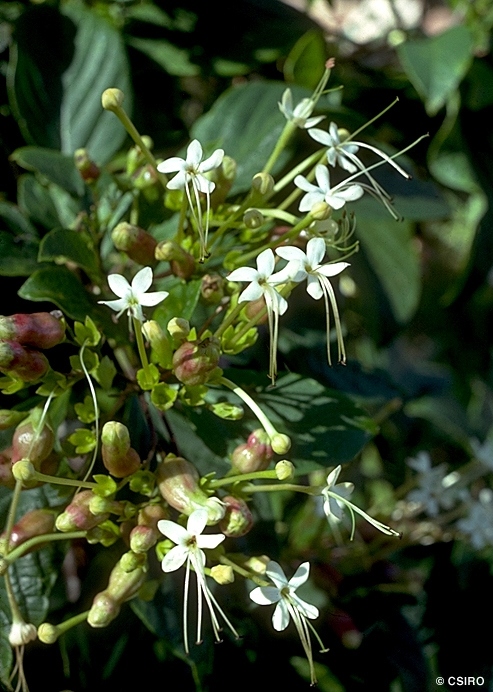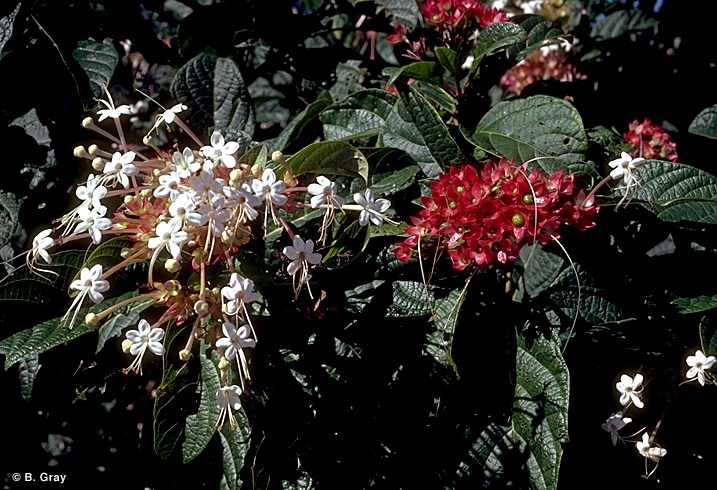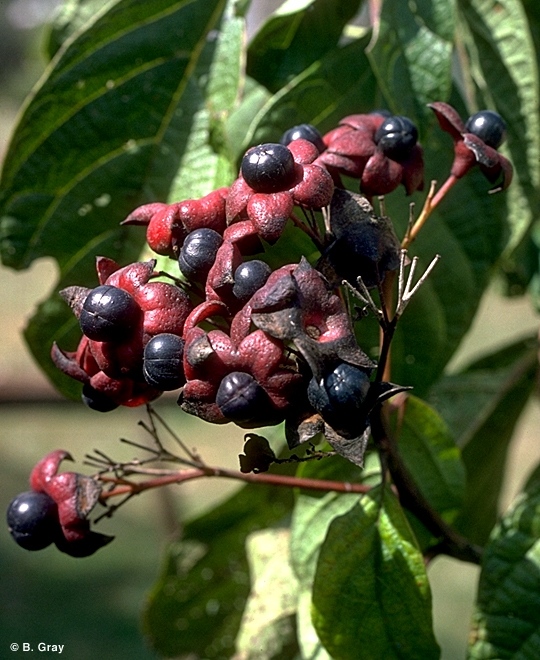Australian Tropical Rainforest Plants - Online edition
Clerodendrum longiflorum var. glabrum Munir






Munir, A.A. (1989) Journal of the Adelaide Botanic Gardens 11: 120. Type: I.R.H. Telford 1997, Paluma Range Road, S of Ingham, Queensland, 24.v.1970 (CBG, holotype; BRI, isotype).
Flowers of Magic; Witches Tongues
Leaf blades about 8-20 x 5-10 cm. Lateral veins curved throughout their length but not forming loops. Petiole often purplish.
Fruits globose, about 6-10 x 6-9 mm. Calyx lobes persistent at the base, red at fruit maturity. Carpels purple or almost black at maturity.
First pair of leaves have entire margins or with 1-3 teeth on each side. At the tenth leaf stage: leaf blade ovate, apex acuminate, base obtuse; upper surface with a few scattered hairs along the midrib. Taproot swollen, carrot-like (Daucus carota). Stem hairs just visible with a lens. Seed germination time 26 to 108 days.
Occurs in NT, CYP, NEQ, CEQ and southwards as far as south-eastern Queensland. Altitudinal range from 100-700 m. Grows as an understory tree in lowland and upland rain forest. Also occurs in New Guinea.





